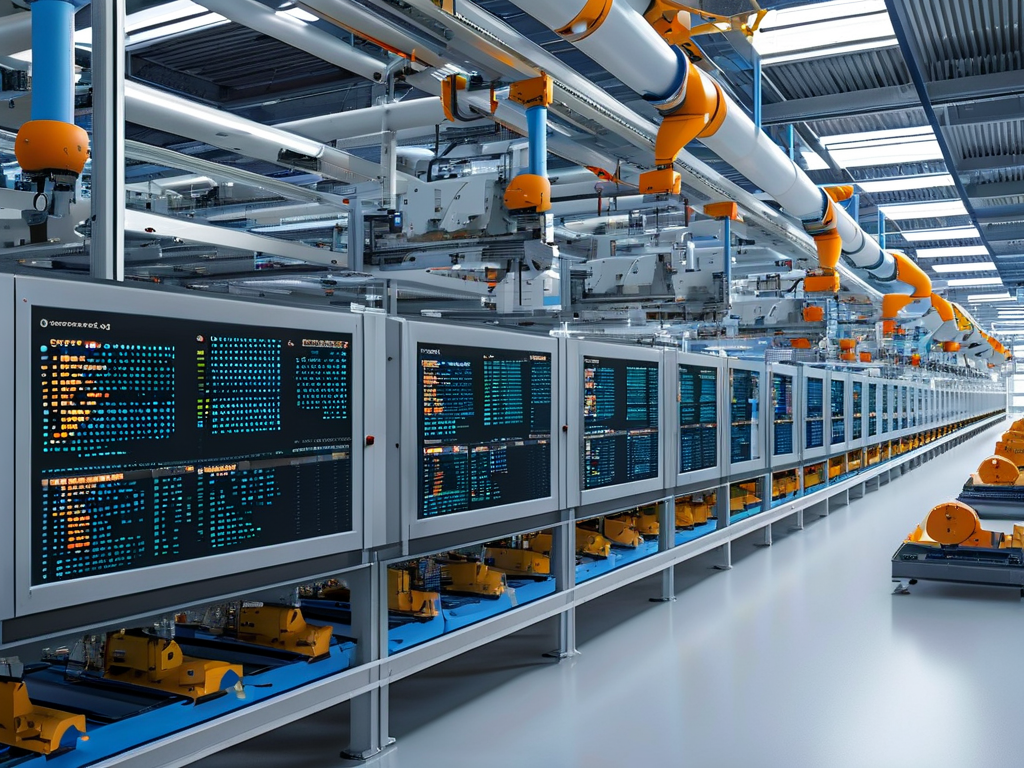The integration of automated deployment strategies into Manufacturing Execution Systems (MES) has become a critical driver for modern industrial efficiency. As factories embrace Industry 4.0 principles, the need for agile and error-resistant system implementation grows exponentially. This article explores how automated deployment methodologies are reshaping MES integration, offering actionable insights for enterprises seeking to optimize their production ecosystems.

The Evolution of MES Implementation
Traditional MES deployment often required weeks of manual configuration, with engineers painstakingly adapting workflows to match factory-specific requirements. A 2023 industry survey revealed that 68% of manufacturers experienced production delays during legacy MES rollouts due to human errors in configuration files. Automated deployment tools now enable organizations to replicate proven templates while maintaining flexibility for site-specific customizations.
Consider this Python-based deployment snippet for environment standardization:
def configure_mes_modules(core_settings):
# Automated template validation
validate_blueprint(core_settings['workflow_template'])
# Dynamic parameter injection
apply_factory_specifics(core_settings['machine_network'])
# Cross-platform compatibility checks
verify_hardware_integration()
This code demonstrates how modern scripting reduces manual intervention while preserving customization capabilities.
Key Advantages of Automation
- Error Reduction: Automated scripts eliminate manual data entry mistakes that previously caused 23% of post-deployment issues (Manufacturing Tech Journal, 2024).
- Speed Multiplier: BMW Group reported a 40% reduction in MES deployment timelines after adopting containerized deployment strategies.
- Scalability Framework: Cloud-native deployment architectures allow multi-factory synchronization. Bosch's Nanjing facility successfully cloned its MES configuration across 7 global sites in under 72 hours using Kubernetes clusters.
Practical Implementation Roadmap
Successful automated MES deployment requires structured planning:
Phase 1: Infrastructure Assessment
Conduct a thorough audit of existing OT/IT systems. A major pharmaceutical company discovered 14% of legacy PLCs required firmware updates before supporting automated MES protocols.
Phase 2: Template Development
Create modular deployment blueprints using tools like Ansible or Terraform. These templates should accommodate variables for:
- Machine communication protocols (OPC UA, MTConnect)
- Data collection frequencies
- Quality control parameters
Phase 3: Pilot Validation
Run limited-scope deployments using digital twin simulations. Siemens' "Virtual Factory" platform reduced physical testing costs by 62% during their latest MES upgrade.
Phase 4: Continuous Optimization
Implement monitoring dashboards with predictive analytics. The diagram below illustrates a typical feedback loop:
[Deployment Engine] → [Performance Metrics] → [AI Optimizer] → [Updated Configurations] Overcoming Implementation Challenges
While benefits are significant, enterprises must navigate several hurdles:
- Legacy System Integration: Older equipment may require gateway solutions. Rockwell Automation's FactoryTalk Edge Gateway has proven effective in bridging vintage PLCs with modern MES APIs.
- Workforce Adaptation: UPSKILL programs are critical. A case study showed factories that invested in automation training achieved full ROI 30% faster than those relying solely on external consultants.
- Security Considerations: Automated deployment expands attack surfaces. Best practices include:
- Signed deployment packages
- Network micro-segmentation
- Blockchain-based update verification
Future Perspectives
Emerging technologies like quantum-resistant encryption and self-healing deployment architectures promise to further revolutionize MES implementation. GE Digital's recent patent filings hint at machine learning models that can autonomously adjust deployment parameters based on real-time production data.
Manufacturers adopting automated MES deployment today position themselves to leverage these advancements while already benefiting from 18-25% improvements in production line changeover efficiency (Deloitte Manufacturing Report, 2024).
Automated MES deployment represents more than technical evolution—it's a strategic imperative in competitive manufacturing landscapes. By combining robust automation frameworks with human expertise, organizations can achieve unprecedented levels of operational responsiveness. As demonstrated by early adopters like Schneider Electric and Foxconn, the transition to automated deployment methodologies yields measurable improvements in both implementation efficiency and long-term system adaptability.







